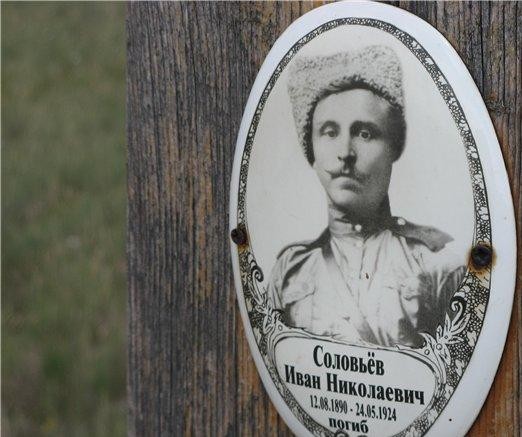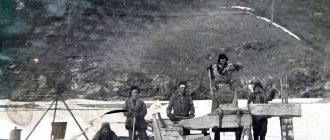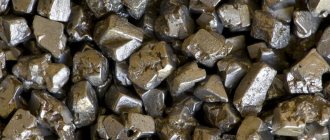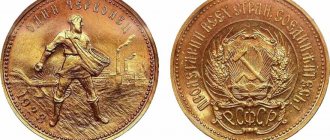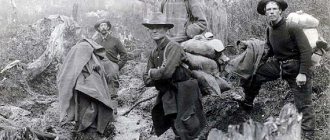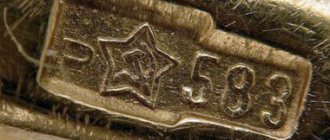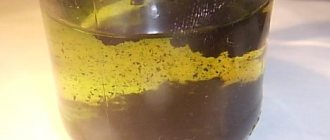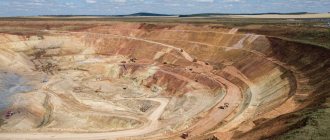The “Yenisei Siberia” project to unite the Krasnoyarsk Territory, Khakassia and Tyva was legislatively approved in April 2021. The main goal is to expand economic relations, as well as the development of industrial, scientific and technical areas.
It is no coincidence that gold mining is included in the comprehensive program: the Krasnoyarsk Territory is considered the undisputed leader in this industry.
The Republic of Tyva also has enough ore zones and nodes (18 objects), but its potential is extremely unexplored due to the lack of infrastructure and geological exploration.
In the resource base of Khakassia, on the contrary, the knowledge of ore zones is high, but there is not enough gold.
The Institute of Geology, Mining and Geotechnology of Siberian Federal University carried out forecasting and metallurgical work in the little-studied territories of the Yenisei Ridge and the Eastern Sayan. The research results became the subject of discussion among the participants of the MINGEO Siberia forum.
Do you remember how it all began?
In 1812, the Senate issued a decree “On granting the right to all Russian subjects to find and develop gold and silver ores with payment of taxes to the treasury.” He gave the official start to the gold rush in Russia, which, however, for some reason did not begin immediately, but almost 20 years later. Only in 1828, the Ural merchants Popovs submitted an application to the Tomsk province to develop a section of the Berikul River. How did the Ural merchants end up in Siberia and why did this not happen immediately after the Senate decree was issued?
The Popov merchants spent more than two million rubles on geological exploration in the Tomsk province in search of gold.
According to numerous testimonies, Yegor Lesnoy lived in these parts - either a former exile, or an escaped convict, or simply an Old Believer hermit. Previously, he worked as a miner in the Ural placers, but he handed over the mined gold not to the owners of the mine, but to illegal resellers - they paid many times more. For this, Yegor was sent into exile in Siberia. Having freed himself (or escaped), the peasant settled near Lake Berchikul, where he began mining gold on the Sukhoi Berikul River. Yegor did not communicate with anyone except his assistant, and kept the place of gold mining a secret from everyone.
But the earth is full of rumors: stories about a peasant who discovered a gold-bearing province in Siberia soon reached the Urals. The rich merchants Popovs first sent their people on reconnaissance, and a year later they themselves came to the Tomsk province. They no longer found Yegor Lesnoy alive: he died under mysterious circumstances, and many versions agree that the peasant, who did not want to reveal his secrets, was simply strangled.
Apparently, his pupil told the merchants about the mine of Yegor Lesnoy, and already in 1828 the mine “1st Berikulskaya Square” began to work.
On November 23, 1851, such a coat of arms of Krasnoyarsk was approved. The lion symbolized strength and courage, and the sickle and shovel reflected the main occupation of the inhabitants - agriculture and mining, primarily gold.
Around the same time, the Popovs explored other major deposits in Siberia in the vicinity - on Sukhoi and Mokroi Berikul, the Salairk Ridge, in the Krasnoyarsk, Achinsk, Kansk and Nizhneudinsk districts. Thus began the gold rush in Russia, which over 50 years gave the country 583 tons of precious metal.
Gold mining in Siberia today
| This section is not completed. You will help the project by correcting and expanding it. |
Currently, the leading company engaged in gold mining in Siberia is Polyus Gold[9]. It develops ore and placer gold deposits in the Krasnoyarsk Territory (Olympiadinskoye, Blagodatnoye, etc. deposits) and the Irkutsk region (Western, Verninskoye and Chertovo Koryto, 94 placer deposits in the Vitim River basin).
Gold feeds, gold feeds, gold leads naked
The largest gold-bearing region in modern Russia is Krasnoyarsk: it is here that almost 50 tons of the precious metal are mined annually, which is 20% of total production. The region took a leading position a long time ago: back in 1851, the coat of arms of Krasnoyarsk was approved - a golden lion holding a shovel in its paws, the main tool of a prospector. Of course, the largest gold mine in Siberia gave birth to its own millionaires, and, as you know, the rich have their own quirks. So, gold miner N.F. Myasnikov ordered business cards made of pure gold: he paid five rubles for each, but with this money he could buy 16 kilograms of sturgeon caviar.
Gavrila Masharov went even further, discovering more than 100 placers, earning himself millions and the status of the richest man in Siberia.
The merchant ordered a medal with the inscription “Emperor of the entire taiga”, for which he received the nickname taiga Napoleon.
According to legend, the medal on the chain “Emperor of All Taiga” weighed more than five kilograms, so Gavrila Masharov never wore it
Gavrila did not rest on this: right in the middle of the taiga, he built himself a house, more like a palace, as befits an emperor. Glass galleries, greenhouses where pineapples were grown, rose gardens, and in a factory built nearby, real Venetian velvet was produced.
It all ended predictably and not at all rosy: Gavrila went bankrupt, went bankrupt, and creditors declared a real hunt for him. Fleeing from them, Gavrila died - most likely in a labyrinth of underground passages that he dug under his house. The location of his palace still remains a mystery, and many who are haunted by the history of the taiga Napoleon are trying to solve this mystery.
On December 3, 2010, the first season of the TV show “Gold Rush” aired on the Discovery Channel.
Gavrila’s story once again confirms the veracity of the proverb popular among gold miners: “Gold feeds, gold feeds, gold leads naked.” However, you can seize the initiative even from fate. Modern prospector Tony Beets, a Klondike legend and member of Discovery Channel's Gold Rush, is known for his experience and intuition. He does not blindly rely on luck, but prefers to create it himself, and instead of buying gold business cards and building palaces, he invests money in the development of his mine. So, he took the risk of investing a substantial amount in the restoration of a 75-year-old non-working dredge, although everyone around said that this ruin was not worth a good word. Tony calculated everything perfectly accurately: after putting the repaired machine into operation, the prospector made a profit of more than five million dollars.
Deposits of Siberia
In the Irkutsk region
The Irkutsk region ranks first in gold mining among all regions of Russia. The largest Sukhoi Log deposit and a number of smaller mines are located here.
Sukhoi Log
Sukhoi Log contains a significant part of the gold reserves of Siberia.
Development of the field began in the 60s of the last century in the eastern part of the region, after scientists studied geomagnetic anomalies in the region and samples of local rocks. Preparing the mine required large investments, but the state's investment has fully paid off. Sukhoi Log still remains one of the most promising gold mining centers in the country.
Bodaibo district
90% of the precious metal is mined in the Bodaibo region. In the 90s, about 10 tons of placer gold were mined here. In the future, the amount of gold mined will increase due to the development of ore deposits.
Large centers include:
- Western, located in the Badaibo region, the structure of the rock is similar to Sukhoi Log;
- Verninskoe;
- "Black Hoof" According to scientists' research, 226 tons of Siberian gold can be mined here.
Altai Gold
On the territory of the Altai Territory there are two large zones with deposits of precious metals:
- Rudno-Altai;
- Tigireksko-Belokurikha.
Gold raw materials for the royal treasury have been smelted here since the 18th century. After the revolution, the business was abandoned, despite the rich reserves of deposits. Only in the 80s of the 20th century, thanks to the work of diligent artels, the extraction of placer gold began. The volumes were small; by the 90s, 135 kg were received here annually.
It took two decades to restore the region's mining industry. Now new enterprises have been opened in the Rubtsovsky district and the mines of the Korbolikhinsky deposit. Attracting investment in the region is facilitated by data on the presence of rare elements. One of the priority areas was the Topolinsky ore field, where on an area of 96 sq. km. the presence of 50 tons of gold is expected.
Leno-Vitimsky gold-bearing area
The oldest gold mining area is located in the basins of the gold-bearing Siberian rivers Olekma, Chara and Vitim. The first placer gold mines were discovered in 1849, named Voskresenky and Spassky. The Pervenets ore deposit began to be developed in 1956. About 300 places of placer gold and 11 ore deposits have been identified in the region.
According to scientists, there are 4.6 thousand tons of precious metals here.
Crime chronicles of Siberian mines
The so-called Demino gold is even more shrouded in mystery. Legend has it that almost a century and a half ago - in the mid-60s of the 19th century - a group of prisoners escaped from the Alexander Central prison, not far from Irkutsk. Surviving in the harsh conditions of the mountainous terrain of the Eastern Sayan was possible only for the most persistent and hardy - Dmitry Demin. He settled in the valley of one of the tributaries of the Kitoi River, where he built his winter quarters and hunted.
And then one day he accidentally stumbled upon a large deposit of ore gold.
Unlike Yegor Lesnoy, Demin did not intend to live as a hermit: he took the gold he mined with him and went to a relatively large settlement - Tunka. Here he bought his freedom by sharing the precious metal with a local official.
Afterwards, Demin married and settled in Tunka, and every few months he went to mine gold for his secret deposit. He revealed the secret only to his sons just before his death: supposedly the gold mine was located between the tributary of the Kitoy and the Shumak River, somewhere in the watershed area. But neither the sons of Demin, nor the gold miner Kuznetsov, who somehow found out about the secret mine, nor the mining technician Novikov, who spent more than three years searching, managed to find the legendary Eldorado of the escaped convict.
But there would be no happiness, but misfortune helped. There was a revolution in Russia, and then a civil war. Novikov ended up on Kolchak’s side. Fleeing with his officers from a detachment of partisans, Novikov accidentally stumbled upon gold. It is unknown whether this was the same Demino deposit, especially since the exhausted White Guards were hardly able to extract anything. However, there was little time to rejoice at the find: all three were soon arrested, and Novikov ended up in an Irkutsk prison. He left there only in 1927 and, together with his companions and hired workers - the Leonov brothers - immediately went in search of gold.
The thirst for profit, which did not disappear even after arrest and prison, turned out to be fatal: Novikov never returned back, nor did his companions.
Later their bodies were discovered, and the investigation quickly found the killers - the Leonov brothers confessed to everything. This is where the legend ends - and more or less reliable facts begin, confirmed by archival documents.
In December 1905, Alexander Kolchak received a golden weapon “For Bravery” - a saber with the inscription “For distinction in affairs against the enemy near Port Arthur.” Later, golden weapons were equated to the status of a state order of the Russian Empire
Several geological exploration expeditions following different routes, including those named by the Leonovs, ended in nothing. No gold was ever discovered in the area of Kitoy and Shumak, which does not prevent modern gold miners from still hoping for a miracle: the Eastern Sayan annually attracts thousands of hunters for luck and at least grains of gold.
Ups and downs
Received a license to develop the Olimpiadinskoye field in 1994. Two years later, the Olimpiadinsky GOK was put into operation, and in 2000, in 10 months, the world's largest complex for processing sulfide-arsenic ores was built and put into operation. The Polyus mining and processing plant grew in 21 months, although according to the project, up to ten years were allotted for construction.
At that time, no one in Russia was building such large gold mining enterprises, and at such a pace, in the remote taiga, in the Far North.
Another giant of the region’s gold mining industry is Sovrudnik LLC, which currently ranks second in the region and sixteenth in Russia. Meanwhile, in its recent history there was a period when it was about the death of the enterprise. In 1994, the North Yenisei Mining and Processing Plant, part of OJSC Zoloto, was declared bankrupt. (One of our Russian paradoxes: a gold mining company is bankrupt!) The Sovetskaya mine was flooded along with mining equipment, cables and other equipment - with everything that had not yet been taken away and scrapped. The gold extraction plant has practically stopped. For about a year, people managed to exist without work, and therefore without wages. The same situation happened at the “New Kalami” and “Vangash” quarries: production collapsed, people fled.
But the leadership of the region and district did not allow the enterprise to go bankrupt. At the end of the “dashing 90s”, Sovrudnik LLC was created on the ruins of the North Yenisei Mining and Processing Plant. In 1999, he received a license to mine gold ore at the Eldorado deposit. This opened a new era of stability and prosperity for the Sovrudnik gold miners and for the residents of the entire North Yenisei region. The company annually increases its production and processing volumes. If in 1999, a year after its formation, the team extracted 190 kilograms of metal, then in 2006 - about two tons. And last year - more than four.
In the same 1999, the New Kalami and Vangash quarries were transformed into an independent enterprise - the Drazhny Mine. The founder of the LLC was the district administration. People breathed a sigh of relief. They started allocating money. Spare parts were purchased and production began. Employees began to return to the company, and staffing was gradually completed. Today, about a ton of gold is mined here per year.
Treasure of Lake Parnoe
Who buried it? But no one buried it. The food appropriation detachment’s convoy — several carts with church utensils — just fell through the ice.
What did you bury? Church utensils, bells, icon frames.
Where did you bury it? Bottom of Steam.
Is he really there? It is likely that the documents confirm the fact of the loss of the convoy, but go get it.

Treasure of Lake Ulyukol
Who buried it? Kolchak's troops, attacked by partisans, sank the cannon and part of the convoy.
What did you bury? Part of an army train, maybe all sorts of rubbish, or maybe something worthwhile, although in today’s times even belt buckles from the early 20th century can be considered valuable.
Where did you bury it? In Lake Ulyukol not far from the shore. The photo shows the exact location.
Is he really there? There is definitely a sunken cannon, many have seen it, but it’s not clear about the valuables.
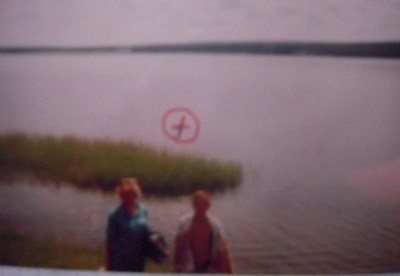
Stepanov's treasure
Who buried it? The first governor of the Yenisei province Alexander Stepanov
What did you bury?
Silver, according to rumors - a lot.
Where did you bury it?
In the basement of your house. More precisely, Rodyukov’s house, where the governor lived. The house was located on the site where the Metropol is now
Is he really there? Almost 100% no. Firstly, Stepanov never had a lot of silver, and secondly, he died in Saratov, and would not have left the treasure in the basement in Krasnoyarsk. Well, thirdly, they would probably have found it under the Metropol in that place during construction.

Platinum, iridium and palladium...
Remember at the beginning of this material we talked about gold bars coming to Gokhran? They are smelted in our city. And not only gold ones. At the non-ferrous metals plant named after V. N. Gulidov. This is our fellow countryman, an outstanding engineer and production organizer, laureate of the State Prize. He headed the company from 1988 to 1999 and made a great contribution to its development.
The decision to build a refinery in Krasnoyarsk (as Krastsvetmet was previously called) was made in 1939 by a resolution of the Central Committee of the All-Union Communist Party of Bolsheviks and the Council of People's Commissars of the USSR.
Platinum and palladium were first refined here from Norilsk sludge on March 23, 1943. Large-scale production of precious metals began in 1945, with the first platinum ingots produced in 1946 and palladium ingots in 1947.
Krastsvetmet is the largest plant in Russia for the production of precious and rare earth metals. And the only enterprise in the world that refines gold, silver and all platinum group metals on an industrial scale. It maintains industrial relations with almost the entire business world. Among the plant’s partners are enterprises from Russia and other CIS countries, companies from the USA, England, South Africa, Canada, Australia...
The plant refines 90% of domestic platinum and palladium, almost 100% of satellite metals, and up to 30% of gold.
In 1994, the largest jewelry production in Russia was launched at the plant. Here, according to their own sketches, they produce products from alloys of gold, silver and platinum. According to orders from organizations licensed to operate with precious metals, Krastsvetmet produces measured bars from gold, platinum and palladium.
The plant processes commercial platinum-containing gold, secondary platinum-containing raw materials supplied by many enterprises in Russia and the CIS countries, spot gold coming from gold mining cooperatives of the region and the country, as well as platinum-containing materials from foreign companies.
№ 66 / 656
Related links:
16 Oct '2014
A German traveler published a book about the Yenisei
28 Jul '2014 On City Day, the IX August Fair will be held in Yeniseisk
Kolchak's Gold
Who buried it? Admiral Kolchak. When World War I began, Tsar Nicholas II ordered the evacuation of 1,600 tons of gold inland. The precious metal ended up in Kazan. As soon as the Civil War began, it was captured by Admiral Kolchak.
What did you bury? 640 tons of gold, 480 tons of silver, church gold, valuable utensils, jewelry of the royal family. There is something to profit from.
Where did you bury it? There are a lot of options: from the outskirts of Minino to the shores of Lake Baikal.
Is he really there? Recently, many studies have appeared that convincingly prove that the Whites managed to transport the royal gold abroad, and they even named the banks where it now lies. But the treasure hunters were not convinced; they are still looking for gold.
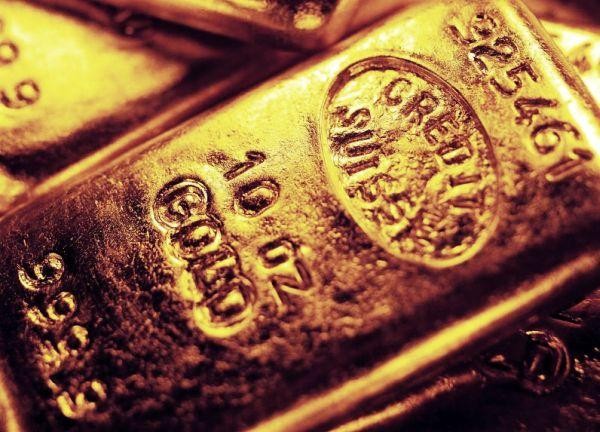
Treasure of Ataman Solovyov
Who buried it? Ataman Solovyov is the commander of the last large “White Guard” detachment operating on the territory of Soviet Russia. He was a partisan in the Siberian forests until 1924. In 1924 he was captured by the Reds and shot.
What did you bury? Solovyov’s detachment attacked surplus appropriation detachments, which, along with grain, confiscated church valuables. The Solovyovites returned the grain to the peasants, but kept the silver and gold for themselves. A couple of times they also robbed mines, where they could also get hold of some gold.
Where did you bury it? The most accurate answer to this question is somewhere. Maybe in the forests of the Krasnoyarsk Territory, and maybe in the Kemerovo region. It's a bit difficult to search.
Is he really there? Who knows, Solovyov had gold - that’s for sure, but whether he buried it or spent it all on food and supplies is unknown.
